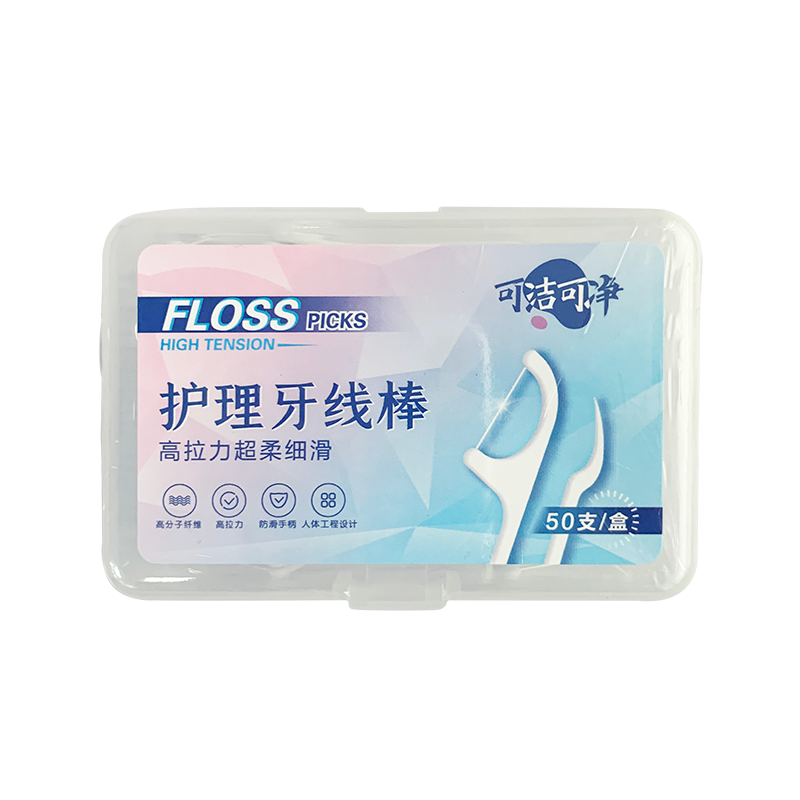What are the safety considerations related to the use of dental floss sticks?
Dental floss sticks are widely used to enhance oral hygiene by facilitating easier access to interdental spaces. While generally safe, there are several important safety considerations to keep in mind to avoid potential oral injury or adverse effects:
1. Risk of Gum Injury and Bleeding
Improper use of dental floss sticks can cause trauma to the delicate gum tissue. Applying excessive force or snapping the floss between teeth may result in cuts, abrasions, or bleeding gums. Although some minor bleeding can be expected initially during flossing if gums are inflamed, repeated trauma from harsh flossing techniques may exacerbate gingival recession or cause localized inflammation.
2. Potential for Floss Breakage or Slippage
Since dental floss sticks have a fixed length of floss tensioned between two points, there is a risk that the floss can snap or break during use. Broken floss fragments may remain lodged between teeth or gums, which could cause discomfort, increase plaque accumulation, or potentially lead to infection if not removed promptly.
Additionally, if the floss slips unexpectedly, it can cause accidental injury to the gums or adjacent oral tissues.
3. Inadvertent Tooth or Dental Work Damage
In rare cases, improper manipulation of floss sticks might lead to damage of dental restorations such as fillings, crowns, or orthodontic appliances. For example, forceful flossing may dislodge loose restorations or irritate sensitive areas around dental implants.
4. Cross-Contamination Risks
Reusing dental floss sticks or sharing them between individuals can increase the risk of cross-contamination and transmission of oral bacteria or viruses. Dental floss sticks are intended for single use only, and proper disposal after each use is important for maintaining oral hygiene and preventing infection.
5. Material Sensitivities and Allergies
Some individuals may have sensitivities or allergic reactions to materials used in dental floss sticks, including latex, certain plastics, or wax coatings on the floss. These reactions, although uncommon, can manifest as irritation, redness, or swelling in the oral mucosa.

6. Environmental and Disposal Considerations
While not a direct health safety concern, improper disposal of plastic dental floss sticks can contribute to environmental pollution. Users should be aware of responsible disposal methods and consider biodegradable or recyclable options where available.
7. Special Populations
Children: Young children using dental floss sticks should be supervised to avoid accidental swallowing or misuse that might injure soft tissues.
Individuals with Limited Dexterity: While floss sticks are often recommended for those with arthritis or limited hand coordination, improper use due to lack of fine motor control may increase injury risk if not guided properly.
Recommendations to Minimize Safety Risks
Use gentle, controlled motions when flossing to avoid snapping the floss into the gums.
Do not reuse floss sticks; dispose of each after a single use.
Choose floss sticks with smooth, rounded edges on handles and floss material that suits individual sensitivity.
Follow dental professional advice on flossing technique tailored to personal oral health needs.
Store floss sticks in a clean, dry environment to avoid contamination.
Supervise flossing in children and instruct on correct usage.
Dental floss sticks are generally safe when used correctly, but attention to technique, proper single-use practice, and awareness of individual sensitivities are essential to minimize risks of oral injury or infection. Education on correct use and product selection can significantly enhance safety and effectiveness.
 English
English русский
русский Español
Español




